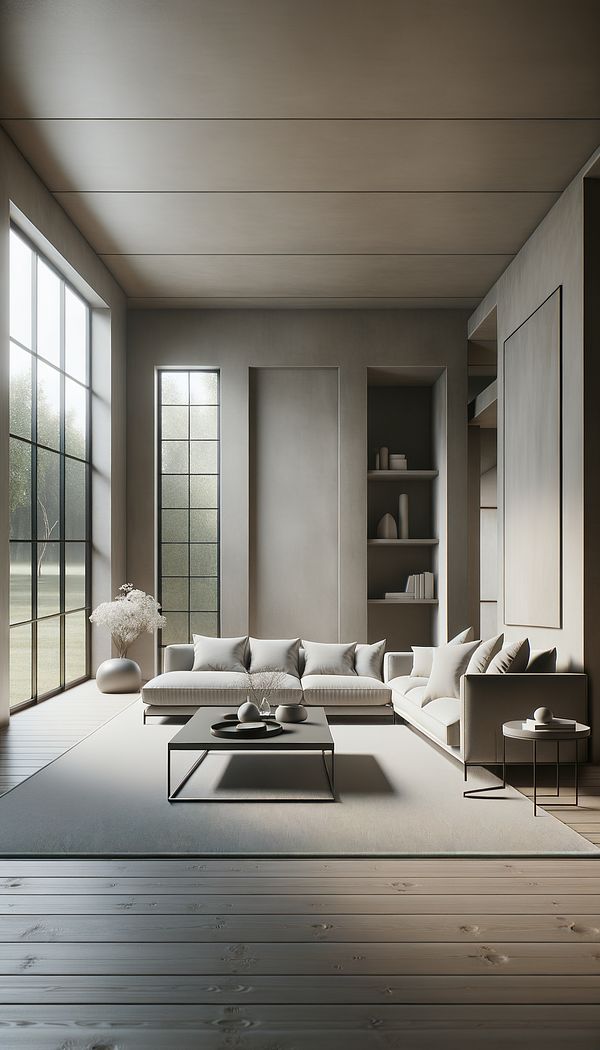What is Minimalist?
A design style characterized by simplicity, clean lines, and a monochromatic palette with color used as an accent.
Description
Minimalism in interior design is more than just an aesthetic choice; it's a philosophy that emphasizes living with less to enjoy more. This design style values the essence of simplicity, functionality, and clarity, often employing a ''less is more'' attitude. In minimalist interiors, every element has a purpose and place, avoiding unnecessary clutter or adornments.
The focus on simple, clean lines and uncluttered spaces promotes a sense of tranquility and order. By utilizing a monochromatic color scheme with strategic use of color for emphasis, minimalist design creates visually calming spaces that also allow for personal expression through carefully selected pieces. This design style is not only about what is present but also about the appreciation of space and form, making it a timeless choice for those looking to create serene and thoughtful environments.
Materials play a crucial role in minimalist design, with a preference for high-quality and natural elements that add texture and interest without overwhelming the senses. The interplay of light and shadow is also a key component, with natural lighting often used to highlight the purity and beauty of the chosen materials and forms.
Usage
Minimalist design is commonly applied in residential spaces, offices, and commercial settings like cafes and galleries. It is particularly appealing to those looking for a clutter-free living environment or workspace that emphasizes functionality and simplicity. A minimalist home might feature open floor plans, minimal furniture, and a neutral color palette, enriched with natural materials such as wood, stone, and metal for warmth and texture.
FAQs
-
How do I achieve a minimalist look in my home?
Start by decluttering and focusing on essential items only. Use a neutral color palette with splashes of color for accent, and opt for furniture and decor with simple, clean lines. Natural lighting and high-quality materials should be emphasized.
-
Is minimalist design expensive?
Not necessarily. While minimalist design often features high-quality materials, the focus on simplicity and functionality means that you can achieve a minimalist look without excessive spending. Choosing carefully and investing in fewer, but better, items is key.
-
Can minimalist design be cozy?
Absolutely. Although minimalist spaces are clean and uncluttered, the use of natural materials, soft textures in textiles, and strategic lighting can create warm and inviting spaces.
Practical Application
To embrace minimalist design, begin by decluttering to create a clean canvas. Choose a neutral color palette, opting for quality over quantity when selecting furniture and accessories. Focus on functionality and the joy each piece brings to ensure your space remains both minimal and personal. Pay close attention to natural lighting and the texture of materials to add depth and warmth to your minimalist space.
-
Design Styles478 articles
-
Materials & Textiles360 articles
-
Decorative Techniques322 articles
-
Color & Patterns154 articles
-
Space Planning & Layout134 articles
-
Furniture ArrangementFurniture arrangement is the process of organizing and positioning furniture in a room to create a cohesive, functional, and aesthetically pleasing space.
-
Pinch PleatsPinch pleats are a style of drapery folds, where fabric is gathered into groups of tight folds at the top to create a decorative header.
-
Campaign FurnitureCampaign furniture is portable, foldable furniture designed for travel and military campaigns.
-
Broken PedimentA broken pediment is an architectural element that features a gap or break at its apex.
-
Pedestal DeskA pedestal desk is a large, freestanding desk featuring drawers or cabinets in its supporting pedestals.
